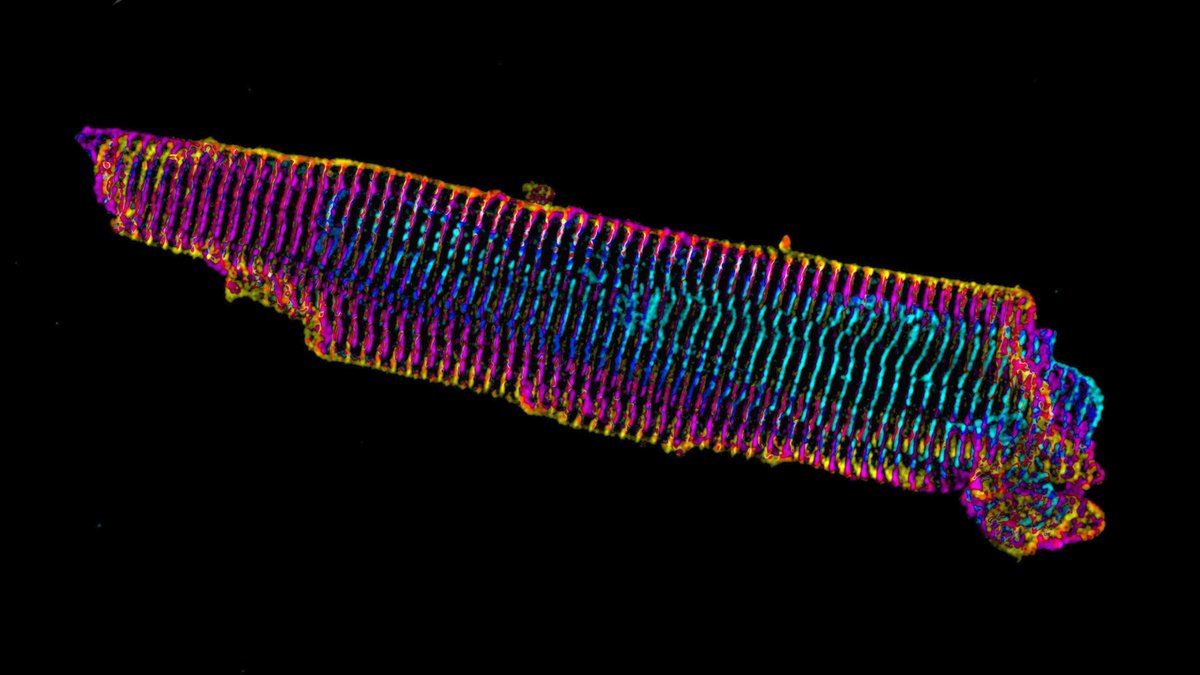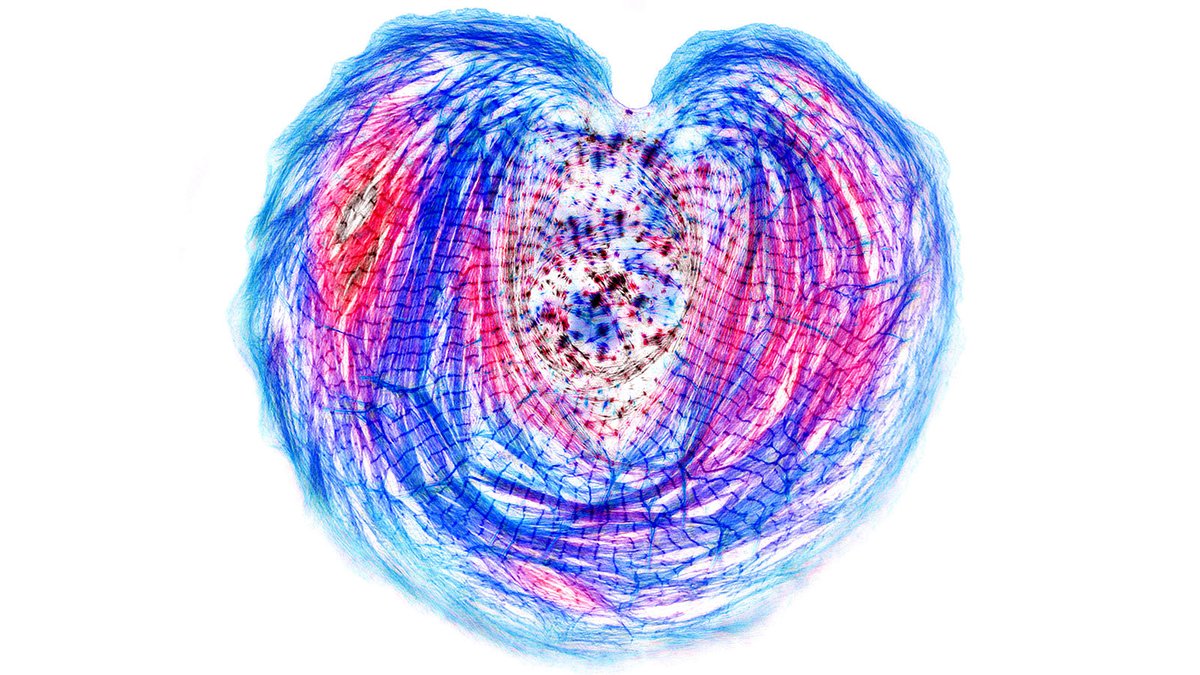Discover and read the best of Twitter Threads about #cellbiology
Most recents (14)
PÉRDIDA DEL OLFATO POR #Covid_19 👃🏼❌
Ésta es una de las afectaciones del sistema nervioso más comunes cuando se padece una infección por SARS-CoV-2¹
Les platico un poco de lo que se sabe hasta el momento
Abro hilo 🧵👇🏼
1/17
Ésta es una de las afectaciones del sistema nervioso más comunes cuando se padece una infección por SARS-CoV-2¹
Les platico un poco de lo que se sabe hasta el momento
Abro hilo 🧵👇🏼
1/17
Las personas que presentan pérdida del olfato (anosmia) por #COVID19 generalmente recuperan este sentido en un período que va de unos días hasta algunas semanas² 📅
2/17
#SmellLoss #Anosmia
2/17
#SmellLoss #Anosmia
¡La #sinapsis como nunca la habías visto!🤩Animación de @janetiwasa y @Na_y_ak. Las neuronas se comunican mediante la liberación de neurotransmisores entre el axón de una y la dendrita de otra. En este vídeo (que desgrano en un #HILO) se explica cómo es posible que sea tan rápida
Sarcomeres in cardiac myocytes (heart muscle cells) are mechanically coupled to focal adhesions through dorsal stress fiber-like structures. #cardiotwitter #CellBiology
1/13
A thread based on Figure 1 of...
molbiolcell.org/doi/10.1091/mb…
1/13
A thread based on Figure 1 of...
molbiolcell.org/doi/10.1091/mb…
ATTN #CBD stakeholders: @US_FDA today holding scientific conf. on CBD/other #cannabinoids. I'll be live tweeting throughout. Not sure we'll get much insight on immediate path forward for consumer products but I'll share noteworthy observations. Agenda: bit.ly/3pHXU8V
I'll be paying particular attention to @DrAbernethyFDA's remarks at 9:05a (head of #FDA's #CBD Policy Working Group) and @DThrockmortonMD's keynote at 9:15a (one of Agency's principals for regulating R&D, manufacture & marketing of #cannabis & cannabis-derived #drug products).
Pra deixar o pessoal de laboratório feliz e as aulas EAD menos complicadas, segue em anexo:
🔬THREAD COM SIMULAÇÕES DE LABORATÓRIO VIRTUAL🔬
#BiomedTwitter #AcademicTwitter #science #biology
🔬THREAD COM SIMULAÇÕES DE LABORATÓRIO VIRTUAL🔬
#BiomedTwitter #AcademicTwitter #science #biology
Nessa thread você vai encontrar simulações de laboratório de diagnóstico, #microscopy, #immunology, #molecularbiology, #cellbiology e tudo que eu encontrar. Dá uma olhada até o final pra ver se tem alguma simulação que te interessa! Vou atualizando aos poucos! :)
Antes de começar, gostaria de avisar que a maioria (talvez todas) das simulações são em inglês, infelizmente :(
🧬 Minha dica pra quem ainda não tem domínio da língua: ativa a tradução do google translate na página e vê se consegue entender o conteúdo da página. Talvez ajude!
🧬 Minha dica pra quem ainda não tem domínio da língua: ativa a tradução do google translate na página e vê se consegue entender o conteúdo da página. Talvez ajude!
Looking for ways to bring discussions of #racism in your #science classes? Some ideas I use in class & in talks e.g. genome-wide sequencing studies, databases are skewed. Must be accounted for when extrapolating these data (e.g. personalized medicine) nature.com/news/genomics-… 1/n
Especially when those findings are used to develop decision #algorithms otherwise #racism gets "baked in" #ArtificialIntelligence is not neutral. Healthcare outcomes reflect societal racism nature.com/articles/d4158…
2/n
2/n
Which means that structural #racism can kill #cancer patients "Black patients with breast cancer and other malignancies face historical inequities that are ingrained but not inevitable" acsjournals.onlinelibrary.wiley.com/doi/full/10.10…
3/n
3/n
We found unique breast immune cells in the duct walls – ductal macrophages. They remove dying cells, help remodelling + are key players in cancer.
How did we get from this first sighting to finding their identity and function? Follow this thread!
bit.ly/35o2XSj
1/n

How did we get from this first sighting to finding their identity and function? Follow this thread!
bit.ly/35o2XSj
1/n
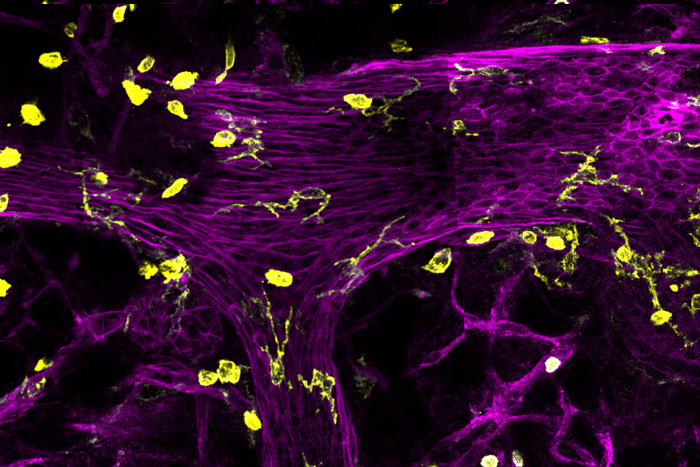
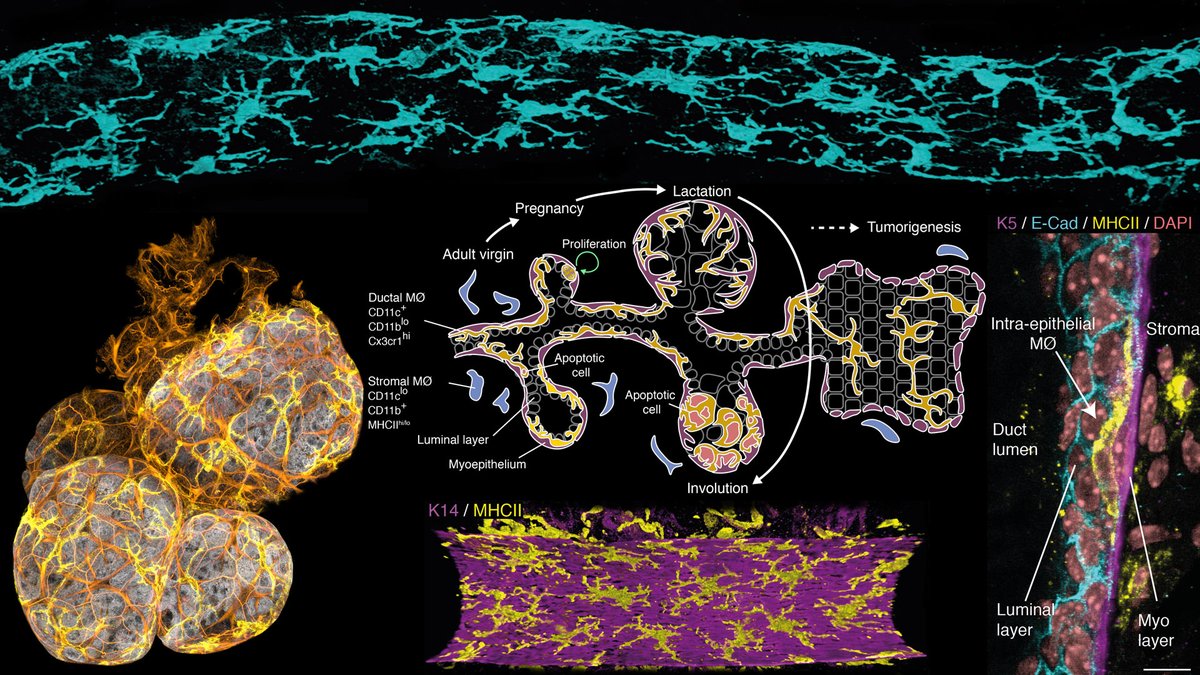
The breast contains mammary ducts surrounded by fat, blood vessels, immune + other cells.
We use 3D imaging to investigate the complex relationships b/w these cells to better understand disease.
#microscopy #mammarygland
2/n
We use 3D imaging to investigate the complex relationships b/w these cells to better understand disease.
#microscopy #mammarygland
2/n
The story about mitochondria being ~10° hotter than the rest of the cell, published @PLOSBiology a couple years ago (journals.plos.org/plosbiology/ar…) got some cool, albeit indirect, support recently @naturemethods… #Biophysics #CellBiology
The original paper, which was mainly based on the temperature-dependent fluorescence of a mitochondria-targeting probe, was accompanied by a “Primer” (journals.plos.org/plosbiology/ar…) highlighting potential flaws and implications, a special sort-of-peer-review step by PLOS Biology.
This new awesome resource @naturemethods - nature.com/articles/s4159… - offers some intriguing orthogonal validation. This is a proteome-wide study of protein thermal stability across 13 organisms, conducted using a mass-spec-based approach.
1/ At #ASCBEMBO19 we will present five posters and a tech talk on #aimicroscopy and #CLEM. Details here: drvtechnologies.com/ascbembo2019
Many thanks to our collaborators Hari Shroff, Jiji Chen, @huzhao4, Rachel Wong, Chris Combs, @3i_inc.
#microscopy #imageanalysis #Aivia #ASCBEMBO2019
Many thanks to our collaborators Hari Shroff, Jiji Chen, @huzhao4, Rachel Wong, Chris Combs, @3i_inc.
#microscopy #imageanalysis #Aivia #ASCBEMBO2019

2/ P35/B36 Universal EM Connectomic analyses by Deep Learning Powered App‐matching Image Conversion
drvtechnologies.com/post/ascb-embo…
With Prof. Rachel Wong and @Sallywing
#ASCBEMBO19 #AImicroscopy #Aivia #AiviaCloud #imageanalysis #microscopy #CellBiology #machinelearning #drawacell
drvtechnologies.com/post/ascb-embo…
With Prof. Rachel Wong and @Sallywing
#ASCBEMBO19 #AImicroscopy #Aivia #AiviaCloud #imageanalysis #microscopy #CellBiology #machinelearning #drawacell

3/ P57/B58 GPU‐accelerated Machine Learning‐powered 3d Image Segmentation at Scale
Details: drvtechnologies.com/post/ascb-embo…
#ASCBEMBO19 #AImicroscopy #Aivia #AiviaCloud #imageanalysis #microscopy #CellBiology #machinelearning #drawacell #pixelclassifier #imagesegmentation
Details: drvtechnologies.com/post/ascb-embo…
#ASCBEMBO19 #AImicroscopy #Aivia #AiviaCloud #imageanalysis #microscopy #CellBiology #machinelearning #drawacell #pixelclassifier #imagesegmentation

Unconventional, signal-peptide-independent secretion of FGF2 - more details into mechanism and membrane accumulation. Involvement of the Na,K-ATPase in membrane recruitment before translocation. #CellBiology
biorxiv.org/content/10.110…
biorxiv.org/content/10.110…
FGF2 is secreted through a signal-peptide-independent mechanism, which involves accumulation at the membrane, oligomerization, and passage of oligomers through the membrane where they then break down. New to me is the involvement of Na,K-ATPase.
Authors use direct biochemistry, NMR, mutagenesis, modeling, and high-resolution TIRF to look at single particle recruitment of FGF2 to the membrane (before secretion), and show it is dependent on an interaction with Na,K-ATPase which they map to specific lysine residues.
Tetraspanin 15 associating with ADAM10 biorxiv.org/content/10.110…. ADAM10 and Tspan15 expression are co-dependent in a cell-type specific manner, and ADAM10-Tspan15 is a functional scissor complex. Interesting cell biology of membrane protein dynamics + assembly. #CellBiology
Some data could be a bit stronger - expression of other TspanC8s in cell types where Tspan15 was not necessary for ADAM10 expression, BiFC experiments could’ve used more controls. The fusion protein experiment was pretty clear, and overall conclusions seem well supported.
Tetraspanins are organizers of membrane proteins and membrane domains, and ADAMs are relatively promiscuous proteases - seeing the crosstalk between them being established is cool and hopefully clarifies some of the biology.
"Life did not invent #DNA."
Experimental support for the #hotsprings hypothesis for life's origin: David Deamer of @ucsc on nucleic acid polymerization in the wet-dry cycling of Darwin's "warm little pond," powered by #geothermal. Lab results confirmed in #hydrothermal pools.



Experimental support for the #hotsprings hypothesis for life's origin: David Deamer of @ucsc on nucleic acid polymerization in the wet-dry cycling of Darwin's "warm little pond," powered by #geothermal. Lab results confirmed in #hydrothermal pools.




From "boring statistical partitioning" in the fission of early protocells to the complex #homeostasis-driven #mitosis of the cells we know - Doron Lancet of @WeizmannInstSci on the gradient between closure of #autocatalysis #networks to complex regulatory mechanisms of #biology. 






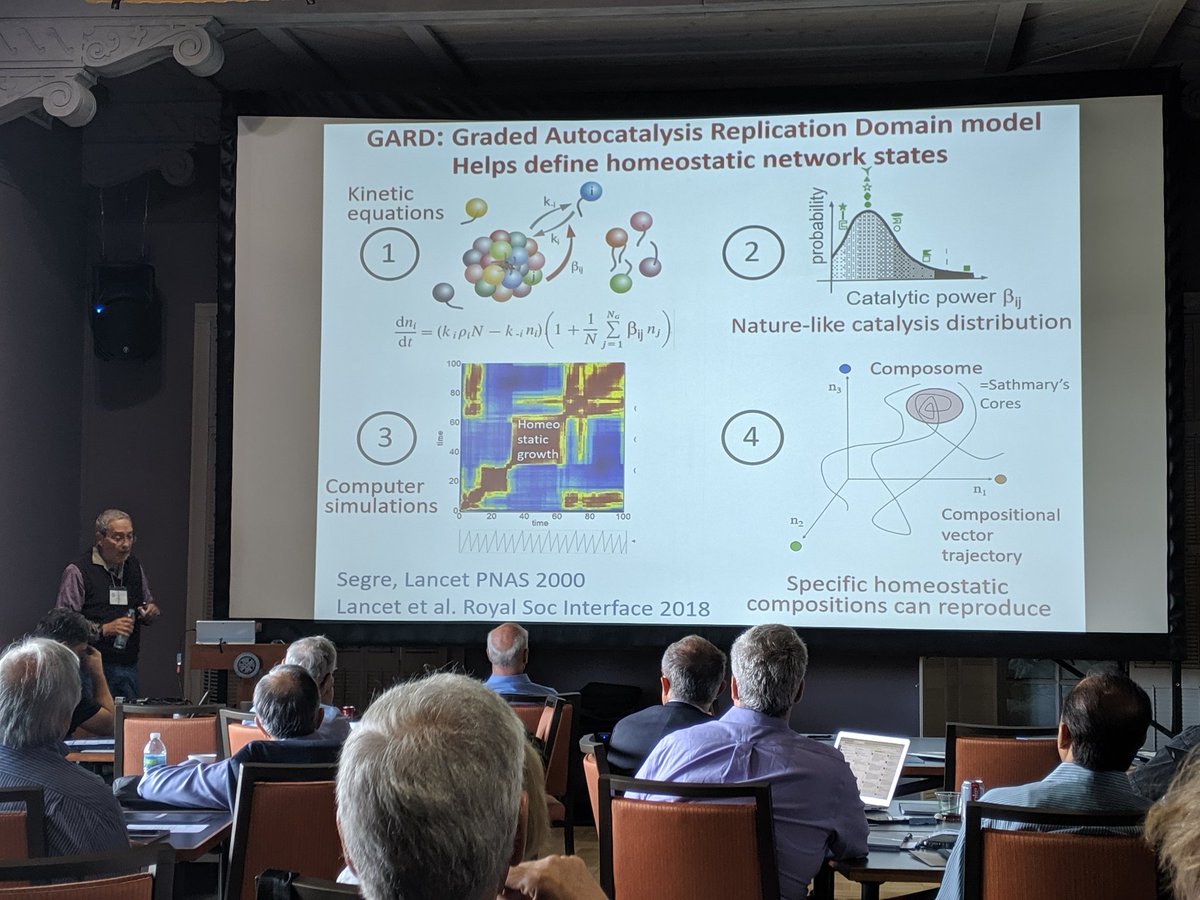
"Life is an integrated nested network of dynamic #kinetic cycles."
Addy Pross emphasizes the importance of motion to the persistent forms of self-organizing #complexsystems at SFI today



Addy Pross emphasizes the importance of motion to the persistent forms of self-organizing #complexsystems at SFI today




Very cool pair of new preprints @biorxivpreprints from @barton_lab on TLR regulation by Unc93b1 - biorxiv.org/content/early/… and biorxiv.org/content/early/… Here's my summary and a couple thoughts... #TLR #CellBiology #Immunology #PreReview #ASAPBio
First one, on TLR9 regulation by Unc93b1. Triple-alanine scanning mutagenesis library revealed mutant of Unc93b1 (SKN) that abolishes TLR9 signaling, although leaves endosomal trafficking and maturation intact. Single serine mutant (S282A) is responsible for full SKN phenotype
SKN or S282A both reduce amount of TLR9 binding to CpG. Both also increase amount of TLR9 bound by Unc93b1. Other mutations in same region of Unc93b1 (loop 5) either enhance or block Unc93b1 binding but all impair TLR9 activation, with much less effect on TLR7
Incredible paper from the Elledge group in @CellCellPress, cell.com/cell/fulltext/…, discovering new regulation of protein stability by “DesCEND” degrons and shaping of eukaryotic proteome... 1/18
Starts with proteome-scale discovery of linear peptide degrons (sequences mediating degradation) - peptide fusion with GFP, co-expressed with DsRED as internal control - sort based on GFP/DsRED ratio, low ratio = unstable GFP = peptide acting as degron... 2/18
CRL (cullin ring E3 ligase) inhibition stabilized a fraction of peptide-GFP fusions - shown to be mostly Cul2 and Cul5 dependent. CRISPR screening leads to some CRL2 adaptors... 3/18


